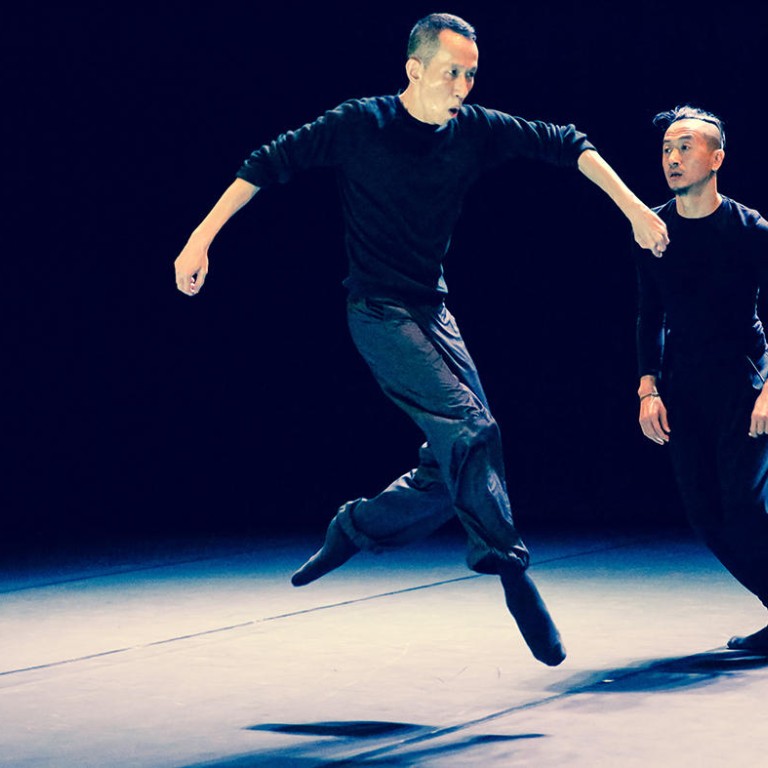
Zuni Icosahedron's 0 / 2 at the Cultural Centre
The only homegrown dance programme in this year's New Vision Arts Festival is a first-time collaboration between two of the city's most respected dancer-choreographers: Beijing-born Xing Liang and Hong Kong's own Dick Wong Tai-fai.
The Zuni Icosahedron production opens with the two men greeting each other in a relaxed, friendly fashion. They share first a glass of water, then a banana and finally exchange sweatshirts before embarking on the performance proper.
Essentially a workshop piece, the work consists of a series of dance fragments, solos and duets, which offer a fascinating contrast in styles between Wong's sharp accents and angularity and Xing's fluidity of movement.
An extended first solo by Wong, where he appears to be battling against a force that repeatedly repels him, seems to hint at the conflict over the Occupy movement.
There is a mesmerising slow-motion wrestling bout with the two artists balancing on a box and, in complete contrast, a delightful sequence where the two start dancing to Pitbull's . Wong has always been known for his dry humour, but this throws a totally unexpected light on the usually serious and cerebral Xing.
The piece ends with a striking image of Wong carried on Xing's shoulders projected against the silhouette of a single giant figure - a visual realisation of the concept of the two becoming one to which the title refers.
Done with the simplest of means and experimental in nature, is not - nor is it intended to be - a finished work. Nonetheless, the inventiveness of its ideas, the strong stage presence of both its creators and the warmth of their exceptional rapport make it an intriguing and enjoyable experience.
As an aside, no printed house programme was available for the performance, Zuni Icosahedron having decided to make these available online only for, one assumes, ecological reasons. Not only is this irritating to those of us who actually read house programmes, but the point was defeated by handing out the programme access code attached to a large printed leaflet advertising another production.

